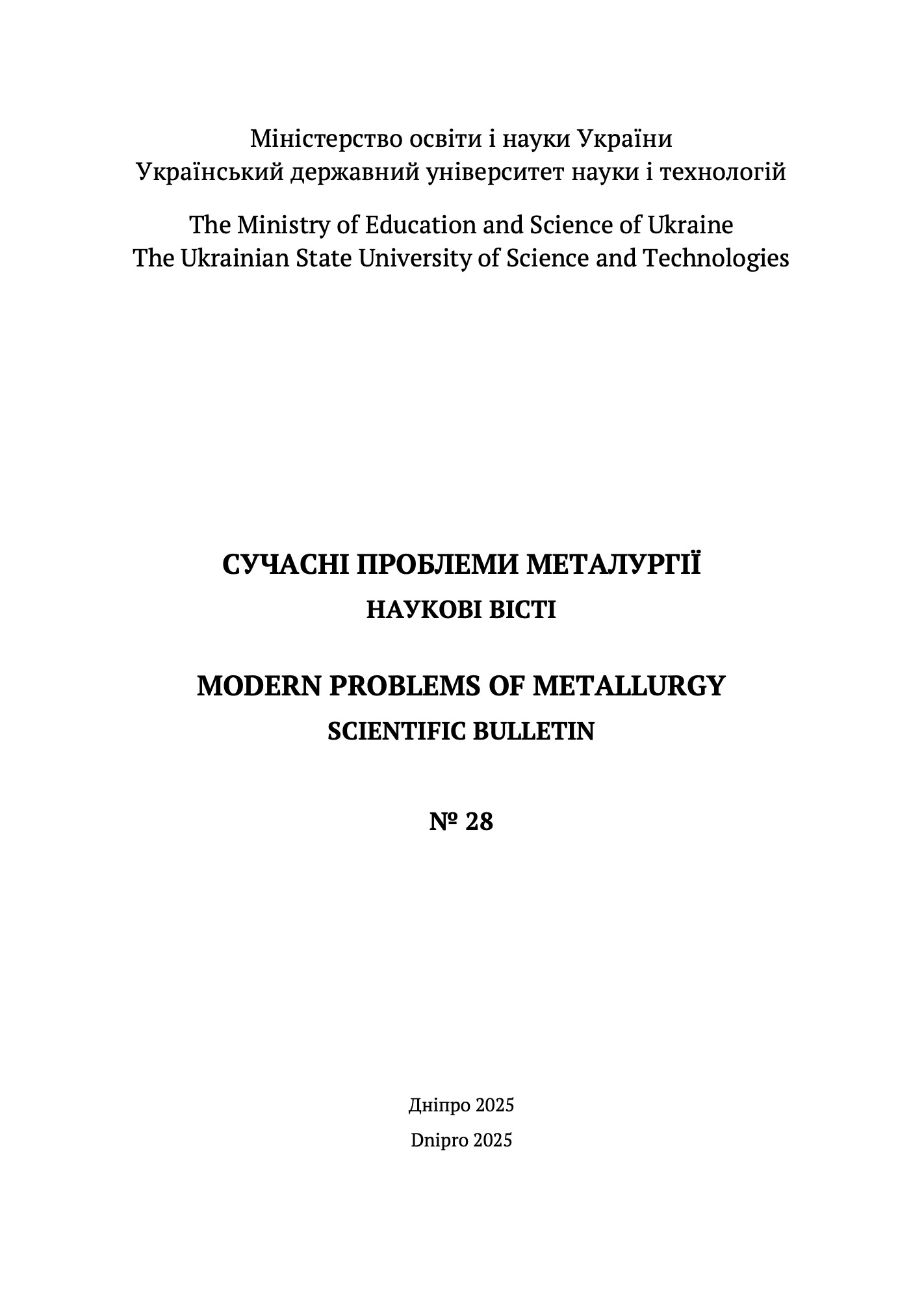MODELING OF ELECTROMAGNETIC PROCESSES IN A NONLINEAR CIRCUIT OF AN ELECTROLYZER FOR PULSE DEPOSITION OF METAL COATINGS
DOI:
https://doi.org/10.34185/1991-7848.2025.01.19Keywords:
metal electrodeposition, pulsed electrolysis, reversed rectangular voltage, analytical modeling, near-cathode voltage drop, electrolyte inductance, deposition current, process optimization.Abstract
The primary objective of this study is to construct a comprehensive analytical model describing the electromagnetic processes in a nonlinear electrical circuit of an electrolyzer operating under pulsed electrodeposition conditions. Special attention is given to the influence of reversed rectangular voltage pulse parameters on the near-cathode voltage drop, deposition current, and the general electrochemical behavior of the system. The goal is to identify optimal operation modes of the pulse power supply that ensure high-quality metal coatings while minimizing energy consumption and structural defects. Methodology. The research employs the method of variable transformation to develop a set of differential equations describing the dynamic behavior of voltage and current in a nonlinear electrolyzer circuit during pulsed operation. The model accounts for critical circuit components: resistive, capacitive, and inductive elements of the electrolyte, as well as nonlinear conductances reflecting electrochemical properties. Analytical expressions for voltage drop and deposition current are derived for both the forward and reverse pulse intervals. The model includes the influence of electrolyte inductance–an often-neglected factor–which significantly alters the current front shape and ultimately affects deposition kinetics and coating characteristics. Numerical simulations are performed to validate the analytical solutions. Results. Closed-form analytical expressions were obtained for the time-dependent near-cathode voltage drop and deposition current under pulsed conditions. It was shown that the electrolyte inductance leads to a rounding of the current front, influencing both the amplitude and stability of the electrochemical reactions. A parametric analysis identified that the optimal pulse duty cycle lies in the range of τ/T ≈ 0.73 to 0.78. Within this interval, the maximum near-cathode voltage drop does not exceed 0.6 V, while the peak voltage and total current remain within safe technological limits (up to 13 V and 150 A, respectively). The average partial discharge current at the cathode remains stable at approximately 70 A, ensuring consistent deposition rates. Scientific novelty. This work introduces a novel analytical approach to modeling pulsed electrodeposition that, for the first time, includes the effect of electrolyte inductance. Unlike existing models relying heavily on numerical simulations, the proposed model allows for direct computation of key process parameters. It enables the derivation of precise criteria for determining the optimal ranges of input pulse parameters–both in amplitude and duration–necessary to avoid the formation of crystalline defects and to achieve uniform, high-quality coatings. These innovations significantly advance the theoretical understanding of pulsed electrochemical processes. Practical significance. The developed model provides a valuable tool for industries that utilize electrochemical metal deposition, including microelectronics, galvanics, mechanical engineering, and power systems. It offers a foundation for designing advanced pulse power supplies with optimized operation modes and supports the development of automated control systems for deposition processes. Furthermore, the model can aid in adapting laboratory results for industrial implementation, improving coating quality, process efficiency, and operational reliability.
References
Kostin, N. A., & Sheykina, O. G. (2000). Electropulse deposition of metals and alloys. Technical Electrodynamics. Thematic Issue "Problems of Modern Electrical Engineering",
Part 1, 74–77.
Kostin, N. A., & Kulikov, A. A. (1981). Application of electroplating technology in the repair of rolling stock. Moscow: Transport. 109 p.
Artemchuk, V. V. (2002). Improving the reliability of axlebox housings of electric locomotive wheelsets (Ph.D. thesis in Technical Sciences, specialty 05.22.09). Dnipropetrovsk,
Ukraine. 203 p.
Development of the fundamentals of technologies and equipment for “on-site” electroplating restoration of worn large-sized (housing-type) parts of rolling stock: Final research report / Dnipropetrovsk State Technical University of Railway Transport. – Project No.
DR 0199U001431. – Dnipropetrovsk, 2001. – 140 p.
Vorobey, A. K. (1958). Study of the process of iron plating in hot chloride electrolytes under periodic reversal of direct current. Minsk: INTIP of the State Planning Committee of
the BSSR. 42 p.
Kostin, N. A., Bondar, O. I., Mykhailenko, Yu. V., & Artemchuk, V. V. (1999). Modeling of the electrolytic deposition process of iron during the restoration of rolling stock components. Technical Electrodynamics. Thematic Issue: "Modeling of Electronic, Energy and Technological Systems", Part II, 35–38.
Downloads
Published
Issue
Section
License
Copyright (c) 2025 Modern Problems of Metallurgy

This work is licensed under a Creative Commons Attribution 4.0 International License.












